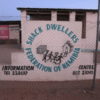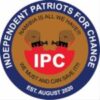Contact Us

Office: 083 000 1000
Studio: 083 00 00 967
Telegram: 083 00 00 967
WhatsApp: 083 00 00 967
Telegram: 083 00 00 967
WhatsApp: 083 00 00 967
Location: Unit 42 & 44, Hyper Motor City, Maxwell Street, Windhoek, Namibia
Listeners:
Top listeners:
Radiowave 96.7FM
 play_arrow
play_arrowUltimate Braai Competition with Round Table Windhoek 34 Lunch w/ Yanika
todayApril 2, 2025

In Zimbabwe’s drylands, a remarkable transformation is underway, thanks to the GEF-7 Dryland Sustainable Landscapes Impact Program (DSL-IP). Supported by the Global Environment Facility (GEF), this collaborative initiative is empowering local communities to achieve the “four betters” outlined by the Food and Agriculture Organization of the United Nations (FAO): better production, better nutrition, a better environment, and a better life.
At the center of the DSL-IP project are the newly established Community Seed Banks (CSBs), which serve as “centers of excellence” for sustainable land and forest management. These CSBs showcase a unique four-in-one model, integrating forestry restoration, soil and land conservation, farmer field schools, tree nurseries, orchards, and solar-powered boreholes.
“The Vanyoro Community Seed Bank is a real demonstration of a center of excellence which is the equivalent of the village business units, which are being promoted by the government, and we believe it will have a transformative impact on the lives of the people in this region.” explained Patrice Talla, the FAO Subregional Coordinator for Southern Africa and FAO Representative in Zimbabwe, at the launch of Vanyoro Community Seed Bank, in Zaka. “With this model the community seed bank will support the accomplishment of the four betters,” he added.
The integration of renewable energy solutions at the Community Seed Bank, such as the solar-powered borehole that supplies clean and safe water to the farmer field school, nursery, livestock and about 296 households (2072 people) in the community is a testament to the project’s commitment to environmental sustainability. “This renewable energy is one of the sustainable measures promoted by the project,” added Patrice Talla.
Empowering local communities
The DSL-IP project’s holistic approach extends beyond just environmental interventions. It also places a strong emphasis on community empowerment and collaboration.
“This program demonstrates His Excellency’s (President Emerson Mnangagwa’s) mantra that we all need to have a whole-of-government approach, and that no one and no place should be left behind,” said the Minister of State for Provincial Affairs and Devolution, Ezra Chadzamira “The complexity of land degradation, biodiversity loss, and climate change cannot be managed by one institution alone, but requires everyone in every institution to pull in one direction,” added the Minister of Environment, Climate and Wildlife, Sithembiso Nyoni, emphasizing the importance of partnerships.
Beneficiary Voices
The impact of the DSL-IP project is already being felt by the local communities. Farmer Leonard Rugwevera, who has been involved in the project’s Farmer Field Schools and also chairperson of Vanyoro Community Seed bank, shared his experience; “Before the project, we struggled to grow enough food to feed our families. But now, with the sustainable farming techniques and access to the seed bank, we’re able to produce more nutritious and indigenous crops that suit our climate and environment. My children are healthier, and I’m able to sell the surplus at the local market, which has improved our household income.”
Another community seed bank member, Edzai Mazhara, highlighted the project’s environmental benefits:
“The tree nursery and woodland management practices have helped us restore the degraded land around our village. We’re seeing more wildlife returning, and the soil is healthier, which is improving our crop yields. It’s amazing to see how these small changes can have such a big impact on our community.”
A shift is also underway as households are finding new opportunities to improve their livelihoods through the value addition of non-timber forest products.
“We used to just collect the fruits and sell them in the local market for very little. But now we are drying them, making jams and juices, and selling them for much higher prices,” said Roselyn Musasa, a smallholder farmer. “This extra income has allowed me to send my children to school and improve our living conditions.”
The DSL-IP project has been instrumental in supporting these efforts, working with communities to provide training on processing, packaging and marketing a variety of forest products like herbs, honey and edible wild plants.
“Before, a lot of these resources would go to waste. But now we are learning how to turn them into valuable products that we can sell,” explained village elder, who is a member of Marula Zimbabwe a Forest and Farm Producer Organisation (FFPOs) in Ward 15, Chivi. Marula Zimbabwe has been value adding the Marula fruit making various products including wine, nuts, marula butter, marula soda and other Non-Timber Forest Products like Zumbani (Lippia javanica) and mufa ndichimuka (Myrothamnus flabellifolius) tea.
“The forestry school clubs like the one here at Poshai Primary School have also been great, getting the younger generation involved in conservation and adding value to what the forests provide,” added Precious Magwaza the DSL-IP project coordinator.
By empowering rural households to derive greater economic benefit from their natural resources, the project is not only transforming lives but also incentivizing sustainable forest management for the long-term.
Towards a sustainable future
The DSL-IP project’s success is a testament to the power of collaboration and community-driven development. By integrating the four betters framework, the initiative is not only improving livelihoods but also contributing to Zimbabwe’s broader sustainable development goals.
“This demonstrates the power of collaboration and the importance of a multi-stakeholder approach,” said the FAO Subregional Coordinator. “By working together, we can achieve transformational change and ensure a more sustainable future for the people of Zimbabwe.”
As the project continues to expand, “the government is committed to documenting the lessons learned and sharing them with other communities, both within Zimbabwe and across the region. The goal is to replicate this model in other provinces, ultimately covering the entire country with similar interventions,” said the Minister of Environment, Climate and Wildlife Sithembiso Nyoni.
Distributed by APO Group on behalf of FAO Regional Office for Africa.
The post Empowering Zimbabwe’s drylands: how the Dryland Sustainable Landscapes Impact Program (DSL-IP) project is transforming lives first appeared on Future Media News.
The post Empowering Zimbabwe’s drylands: how the Dryland Sustainable Landscapes Impact Program (DSL-IP) project is transforming lives appeared first on Future Media News.
Written by: Madeline







6:00 am - 9:00 am

COPYRIGHT 2025 Radiowave 96.7FM | WEBSITE BY DIGITAL PLATFORMS